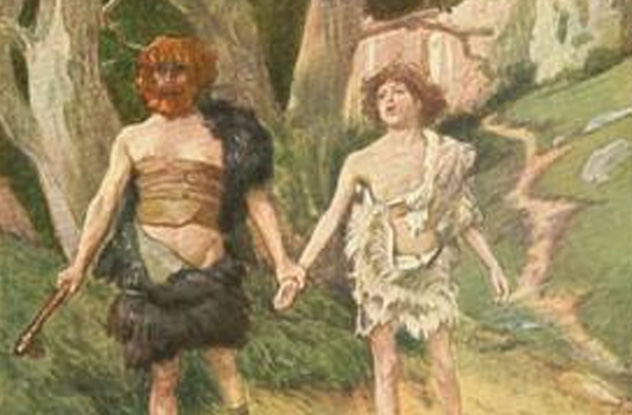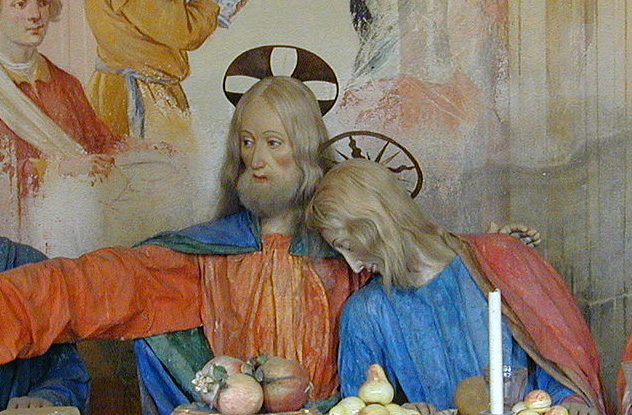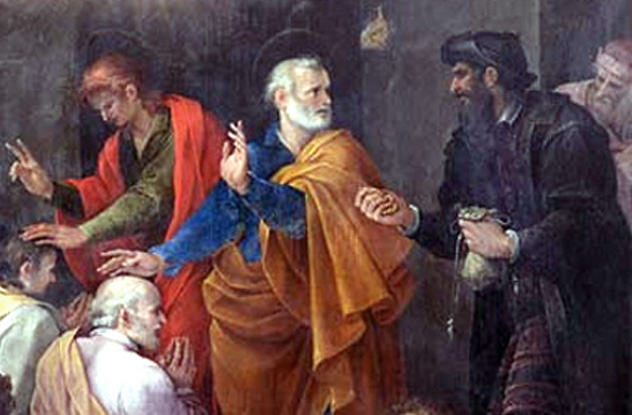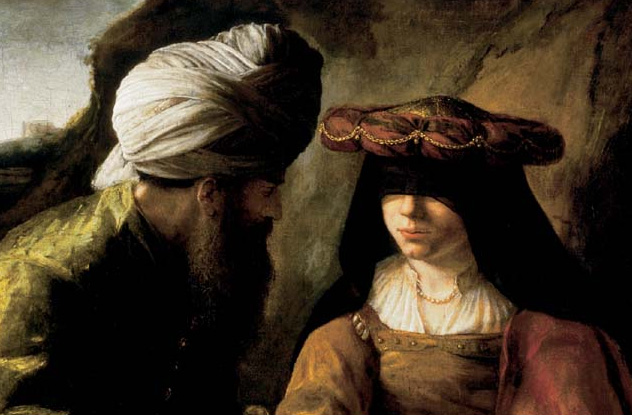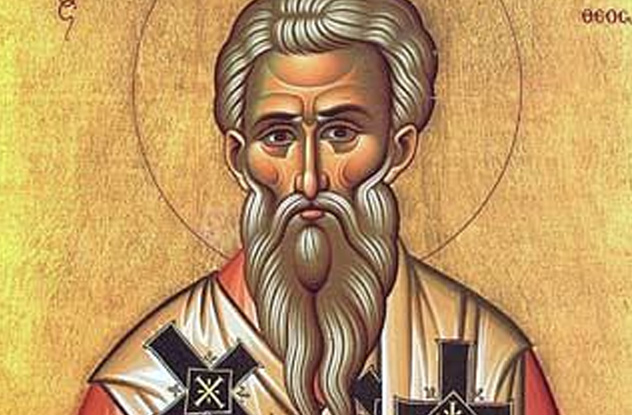10Melchizedek
Probably the single most mysterious figure in the Bible, Melchizedek was a priest-king of Salem (later known as Jerusalem) in the time of Abram (Abraham), suggesting a religious organization, complete with ritual and hierarchy, that predated the Jewish nation and their priestly lineage from the tribe of Levi. He is only portrayed as active in one passage, although he is alluded to once in Psalms, and several times in the New Testament’s Epistle to the Hebrews. Some Jewish disciplines insist that Melchizedek was Shem, Noah’s son. He is thought of, in Christian circles, as a proto-messiah, embodying certain traits later given to Christ. New Testament writings assert that Christ was “a priest forever in the order of Melchizedek,” indicating an older and deeper covenant with God than the Abrahamic-Levite lineage. Hebrews 7, though presents him in a more unusual light. In verses 3 and 4: “Without father, without mother, without descent, having neither beginning of days, nor end of life; but made like unto the Son of God; abideth a priest continually. Now consider how great this man was, unto whom even the patriarch Abraham gave the tenth of the spoils.” Not only do these verses grant Melchizedek a hierarchical level above the most important Jewish patriarch, they assign him mystical qualities. Some take this to mean an earlier incarnation of Christ. Others see it as an ancient manifestation of the Holy Spirit. His identity, role, and theological function have long been debated. The paucity of scriptural references have added to the mystery, making him a somewhat spectral figure. As such, newer spiritual traditions, as well as New Age quacks, have taken liberties with his persona. Gnostics insisted he became Jesus, and he is cited as a high-level priest in Masonic and Rosicrucian lore. Joseph Smith wrote that he was the greatest of all prophets, and Mormons still trace their priesthood back to him. The Urantia, a 20th-century pseudo-Bible that claims to merge religion, philosophy, and science, insists he’s the first in an evolutionary succession of deification manifestations, with Abraham being his first convert. There is even a school of thought that Melchizedek is a title or assumed character name, sort of a theological 007, played by a series of Judeo-Christian James Bonds. The lore of Melchizedek is confusing but deep and fascinating. Apocryphal books give us more details, some cryptic, some relatively mundane. The Second Book of Enoch is particularly informative, insisting Melchizedek was born of a Virgin. When his mother Sophonim (the wife of Noah’s brother Nir) died in childbirth, he sat up, clothed himself, and sat beside her corpse, praying and preaching. After 40 days, he was taken by an archangel to the Garden of Eden, protected by angels and avoiding the Great Flood without passage on Uncle Noah’s ark.
9Cain’s Wife
Cain was, according to Genesis, the first human ever born. He later killed his younger brother Abel in a hissy fit over his sacrifice of meat being more favored than Cain’s sacrificial fruit basket. God put a mark on Cain and cursed the ground he farmed, forcing him into a life as a wandering fugitive. That part of the story is fairly well known. Later, though, we read that he settled in the Land of Nod, and, all of a sudden, he has a wife. Absolutely nothing else is mentioned about her. We don’t even know where she came from. In fact, the question of where Cain got his wife, when his immediate family were apparently the only people in the world, has sent many a perceptive young Sunday schooler down the road of skepticism. Some have posited a mysterious other tribe of people, maybe created after Adam and Eve, maybe even another race or species. But the standard response is that Adam and Eve had many other sons and daughters to populate the Earth. The only way to keep the human race going would be to mate with siblings, nieces, nephews, and cousins. In fact, though the Holy Bible is silent on her identity, the apocryphal Book of Jubilees tells us exactly who was Cain’s wife: his sister Awan, who bore his son Enoch.
8Joseph Barsabbas
After Judas Iscariot turned in his resignation by selling out his boss, Jesus’s disciples rushed to fill the open position and bring the number back up to a more theologically apt 12. The remaining disciples, including the newly convinced Thomas, looked over the candidates from the 120 or so adherents who followed Jesus. Then they cast lots to pick who would fill the position. It went to Matthias, a fairly mysterious character himself. We don’t know where he came from or his previous occupation. Some think he was actually the diminutive Zacchaeus, the tax collector who climbed a sycamore tree to get a better glimpse of Jesus’s ride on the donkey. The man who lost out was Joseph Barsabbas, also known as Joseph Justus. We know nothing solid about him, even less than we know about Matthias. There is, however, one bit of interesting speculation. A list of names presented in Mark 6:3 includes some of Christ’s earliest and most loyal adherents. One of these is a man named Joses, and another is James the Just. Biblical scholar Robert Eisenman suggests that James carried on Jesus’s work, and the writer of the Book of Acts assigned him an alias to minimize his importance.
7The Beloved Disciple
In the Gospel of John, several references are made to “the disciple whom Jesus loved.” This particular favorite is present at the Last Supper, the crucifixion, and after the resurrection. The writer of the Gospel of John even states that the testimony of this disciple is the basis for the text. But there is considerable debate over the identity of this mystery figure. The most obvious nominee is John the Apostle, one of Christ’s inner circle of 12 and the namesake of the Gospel. But none of the 12 apostles were present at the crucifixion, so that crosses him off the list. Lazarus, resurrected by Christ, is also considered. He seems to have been present at the cited events and is referred to specifically, in the story of His death and resurrection, as “he whom Thou lovest.” Mary Magdalene, Judas, Jesus’s brother James, or an unnamed disciple, possibly even a Roman or governmental official, have all been considered. There is even a school of thought that John is an interactive gospel, with the reader being the beloved disciple.
6Simon Magus
“Simony” is the selling of church position or privilege. It is named for Simon Magus, or Simon the Magician, who makes only a brief appearance in the Bible, in Acts 8:9–24. Simon has since become synonymous with heretical thought, and religious exploitation. He is presented as a powerful magician with a large following of in Samaria, who converts to Christianity and wishes to learn from apostles Peter and Phillip. When he sees the gifts of the Holy Spirit, including speaking in tongues and an ecstatic spiritual state, he offers the men money if they will give him the secret to passing these gifts to others. They are not amused. Apocryphal texts reveal quite a bit more, like his alleged ability to levitate and even fly, emphasizing that he was something akin to a cult leader in his hometown. It is suggested that his conversion is more for economic purposes than spiritual, and he set himself up as a messianic figure himself, competing for the Jesus dollar with his own homespun theology. He is thought by some to be a founder of Gnosticism, a patchwork of various religious systems that relied heavily on Judaic and Christian symbolism.
5Onan
Not unlike Simon Magus, Onan’s brief appearance inspired a name for a particular action. He was the second son of Abraham’s grandson Judah, the patriarch and namesake of one of the 12 tribes of Israel. His older brother, Er (yes, just “Er”) was “wicked in the sight of the Lord,” so God killed him. What he did to deserve such an execution remains a mystery. Tradition at the time dictated that Er’s widow, Tamar, become Onan’s wife. Onan had to impregnate her to keep the lineage alive, but he was not as wild about the idea. Maybe it was the thought of impending fatherhood, or Tamar just wasn’t his type. So, taking matters into his own hands, he committed the first recorded act of coitus interruptus. Or, as Genesis 38:9 so poetically put it: “And Onan knew that the seed should not be his; and it came to pass, when he went in unto his brother’s wife, that he spilled it on the ground, lest that he should give seed to his brother.” God was displeased and slew Onan. The whole tale gets even more sordid. Onan had a younger brother, Shelah. Customarily, he would have been next in line to impregnate Tamar, but Judah forbade it. Tamar, rather than graciously accepting forced spinsterhood, seduced Judah and got knocked up by the old man. Judah fathered twins Zerah and Perez, the latter of whom was listed by Matthew as an ancestor of Jesus’s earthly father Joseph. But history’s first recorded money shot had cultural implications as well. “Onanism” became a euphemism for sexual self-gratification, and some took God’s displeasure of the act to indicate the sinfulness of contraception. Some have even suggested that Onan’s death warns that sex is meant only for purposes of reproduction, and not for pleasure.
4Nicodemus
Nicodemus was a member of the Sanhedrin, a council of men who ruled on Jewish law and governance. He became a friend, follower, and intellectual foil for Jesus, whose egalitarian teachings often ran counter to the Sanhedrin’s rigid decrees. He was also a Pharisee, a leader within the Jewish community who toadied up to the Roman government at the time of Christ’s arrest and subsequent crucifixion. He is mentioned three times in the New Testament, all in the Gospel of John. He subtly defends Jesus as the Pharisees discuss His impending arrest. Later, he helps prepare Jesus’s body for burial, indicating he had become an adherent to Christ and His teachings. The first time he is mentioned, however, is in dialogue with Jesus, and these conversations reveal some of the most important aspects of Christian theology, such as the notion of being “born again” and the most famous reference to the divinity of Christ, John 3:16: “For God so loved the world, that he gave his only begotten Son, that whosoever believeth in him should not perish, but have everlasting life.” This detailed conversation explores the divide between the Old Covenant’s dogmatic and exclusive Jewish Law and the New Covenant’s spiritually inclusive concepts. But for a vital contributor to such an important passage of the New Testament, Nicodemus remains a mysterious figure. Some scholars have suggested he may be Nicodemus ben Gurion, a Talmudic figure of wealth and mystical power. Christian tradition suggest he was martyred, and he is venerated as a saint. His name has come to be synonymous with seekers of the truth and is used as a character in many works of biblically inspired fiction.
3James The Just
He is considered, next to Paul and Peter, the most important apostolic figure in the Church’s history. The Book of Acts specifically names him the head of the Christian church in Jerusalem, and he is frequently cited, both scripturally and apocryphally, as being consulted by both Paul and Peter. So who is he? Traditionally, he is thought of as Jesus’s brother (or, more precisely, His half-brother). Jesus is listed, in the Gospels, as having siblings, some younger than Him. One was named James. But James was a common name, and there are several mentioned in the Bible. Two of the 12 disciples were named James, but both are listed as having different fathers than Jesus, and neither went on to become James the Just. James the son of Zebedee went on to be known as James the Great, and James the son of Alphaeus was called James the Less. It is known that he was a contemporary of Jesus, although he seems to have had no real inner-circle status during Christ’s ministry. The apocryphal Gospel of Thomas says Christ Himself designated James to lead the movement upon His death. The Apostle Paul initially seems respectful, even subservient, to “James the Lord’s brother,” calling him a “pillar” of the movement, even though he was later to disagree with him on matters of doctrine. Some, though, have suggested the “brother” designation was spiritual, rather than physical. St. Jerome, among others, suggested that the doctrine of perpetual virginity indicated James could be a cousin, which, given the tribal associations and clannishness of the Jewish community of the time, seems valid. Such a relationship would indicate a certain social proximity without necessarily being a true sibling.
2Simon The Zealot
Of Christ’s 12 disciples, none are more mysterious than Simon the Zealot. His name was meant to differentiate him from Simon Peter and has come to symbolize, for some, that he was a member of a similarly named political movement that advocated Jewish defiance to Roman law. Some have speculated that he acted, within Christ’s inner circle, as a political adviser. His presence then indicated that Jesus had a revolutionary political agenda. The truth is much less exciting. The “Zealot” movement did not take place until long after the time that Christ would have given Simon his sobriquet, and there has never been any serious evidence that Simon, despite the designation, was a political radical. The name, and the word upon which it is based, did not take on those aggressive undertones until the movement itself was in full swing. More than likely, Simon was given his name because of intense spiritual devotion, rather than any radical political stance. Nothing else is known of him, at least not with any surety. The Catholic Encyclopedia mentions him as possibly being a brother or cousin of Jesus, with no real evidence. The Eastern Orthodox tradition says he developed his zeal when Jesus attended his wedding and changed water into wine. Some legends say he was martyred; the philosopher Justus Lipsius somehow got it into his head that he was sawed in half.
1Og
Cited twice specifically, but alluded to frequently in general terms, the Nephilim were a race of violent giants that lived in the pre-Flood world at the same time as humanity. Were they, as some suggest, the offspring of demons and human women? Fallen angels themselves? Or simply the descendants of Seth mentioned in the Dead Sea scrolls, a tribe of cranky cases cursed by God for their rebelliousness? Regardless, they evolved and became known by other names, like the Raphaim, and frequently battled humans for land and power. The most storied of them was Og, the King of Bashan. He was killed, along with his entire army, and his kingdom was ransacked. All of the survivors—men, women, and children—were put to death, and the strongest and most powerful line of Nephilim descendants was eliminated. Some Nephilim bloodlines continued to do battle with the Israelites, though they were becoming less powerful and dying out. One tribe, the Anakim, allied themselves with the human tribes in Philistia. Goliath was thought to have been one of the last few descendants of the Nephilim. Goliath’s height is given in the earliest manuscripts as 275 centimeters (9′). That’s hardly as awe-inspiring as the creature laying in Og’s bed, which measured, according to Deuteronomy, 400 centimeters (13′ 6″). That’s basically Yao Ming sitting on Shaquille O’Neal’s shoulders. Biblically, descendants of the Nephilim could not have survived the Flood, even though Og and other giants are post-Flood figures. Some biblical literalists have attributed their later existence to the descendants of Noah’s family hooking up, once again, with demons. Or, being fallen angels and not human, they did survive the flood. Jewish tradition gets deeper into information about the Nephilim and their descendants, going against the grain of the biblical account. It tells of Og booking passage on the Ark by promising to act as a slave to Noah and his family. Other accounts have him hanging on to the side of the Ark and riding the flood out rodeo-style. Brent Sanders is a writer, musician, and freelance nuclear inspector who lives in a bomb shelter in suburban Appalachia. He occasionally rants about music, politics, and sports at UberMullet.com.

